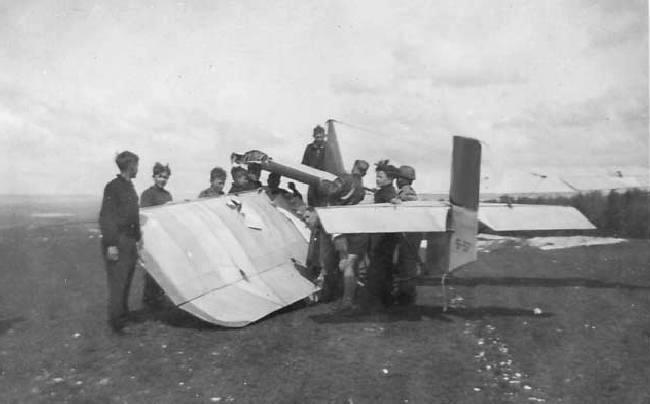
Figure 1.--The German military in the 1920s, well before Hitler's rise to power began promoting glider clubs. As a result, there was a reservoir of young Germans with basic flying skills. |

|
The Versailles Treaty prohibited Germany from both army and naval military aviation. There was no ban, however, on civil aviation. The German Government promoted the growth of a civil aviation industry through a vaiety of credits and loan guarantes. This was a policy persued in other countries. Junkers, Heinkel, Dornier, and the Bayerische Motorenwerke (BMW) all were involved in the production of both engines and air frames. Smaller companies also manufactured air frames.
German companies also began exporting military planes (1930). Germany exported planes to Nationalist China which was at the time fighting war lords and facing an increasingly beligerant Japan. Germany in 1925 began developing large planes. They were presented as civilian aircraft, but in fact were designed as prototype bombers. This included both JU-52 and the Junkers G-38, the first flying wing type aircraft. Germany by 1930 had an estimated 1,000 planes anout half of which could be converted for military use. [Gumble] German companies also manufactured military aircraft. This was done through foreign subsidaries. The Swedish branch of Junkers, A. B. Flygindustri, built and tested a pioneer two-seater fighter (1931). [Gumble] The military also organized civilian and youth flying clubs to create a reservoir of men with flying skills who could easily be trained for military aviation crews.
Aircraft were first seriously developed for war during 1914. The fairmly primitive aircraft in 1914 were raidly imprived during the War. Bombers were being built for a strategic bombing campaign in 1919, but the War ended before that occurred. The Germans had, however, used Zephlins to bomb British towns. In an effort to criple future German military operations, the Versailles Treaty prohibited Germany from both army and naval military aviation.
It is a useful question to ask as to how the Luftwaffe which was only created in 1933-35 could so quickly have built a force capable of forcing Britain and France to capitulate at Munich only 3 years later (1938) and th dominate the skies over Europe until American air forces were committed to the European theater (1942). the reason is that the German military found numerous ways to evade the Versailles restrictions and thus lay the groundwork for an air orce before the Luftwaffe was created.
The Rapollo Treaty with the Soviet Union offered opportunities for German military personnel to train secretly in planes. And for German aircraft companies to work on ne designs.
There was no ban, however, on civil aviation. The German Government promoted the growth of a civil aviation industry through a vaiety of credits and loan guarantes. This was a policy persued in other countries. Junkers, Heinkel, Dornier, and the Bayerische Motorenwerke (BMW) all were involved in the production of both engines and air frames. Smaller companies also manufactured air frames.
Thus when the NAZIs seized power there were several companies in Germany which had the expertise and technology to design and build modern aircraft. Germany in 1925 began developing large planes. They were presented as civilian aircraft, but in fact were designed as prototype bombers. This included both JU-52 and the Junkers G-38, the first flying wing type aircraft. Germany by 1930 had an estimated 1,000 planes anout half of which could be converted for military use. [Gumble]
Civilian airlines were also created, including Lufthansa. The airlines had obvious military use. The planes, pilots, and ground support staff could easily be shifted to military operations.
The Versailles Peace Treaty covered the Germany military. It did not specifically prohibit the building of military planes for export. German companies began exporting military planes (1930). Germany exported planes to Nationalist China which was at the time fighting war lords and facing an increasingly beligerant Japan. The German military also continued to develop technology through secret arrangements with foreign countries. The Rapollo Treaty made possible secret military activities in the Soviet Union. There were also commercial contacts with the Japanese.
German companies also manufactured military aircraft. This was done through foreign subsidaries. The Swedish branch of Junkers, A. B. Flygindustri, built and tested a pioneer two-seater fighter (1931). [Gumble]
The military also organized civilian and youth flying clubs to create a reservoir of men with flying skills who could easily be trained for military aviation crews. After the NAZI take-over and the creation of the Hitler Jugend (HJ) organization, the older boys were chaneled into these glider clubs through the specilized air unit of the HJ, the Flieger HJ. Once the Luftwaffe was created (1935), the Fliger HJ program was used to channel boys into the Luftwaffe.
Hitler created the Luftwaffe (1935). Göring was made Air Marshall and put in charge. Göring began a flagarant evasion of the terms of the Versailles Treaty which the NAZIs soon did not even attempt to hide. With the ground work laid by evasions of the Versailles Treaty during the 1920s and early 30s, Göring within a year had a functioning air force. The new Luftwaffe planes first were exhibited ton the world in the Spanish Civil War (1937). It was the new Luftwaffe that cowed the British and French at Munich (September 1938) and played a key role in smashing Poland (1939), seizing Norway (1940), defeatung France (1940), invading Yugoslavia and Greece, and Barbarossa (1941).
Gumbel. E.J. Disarmament and Clandestine Rearmament under the Weimar Republic. Gumbel was a pacifists who helped expose the German rearmament program. He was as a result charged with high treason by the NAZIs. He fled to France and was almost arrested and extradited after the Germans occupied France, but managed to escape to America.
Navigate the Boys' Historical Clothing Web Site:
[Return to Main Versailles Treaty evasion page]
[Return to Main Versailles Treaty page]
[Introduction]
[Activities]
[Biographies]
[Chronology]
[Clothing styles]
[Countries]
[Bibliographies]
[Contributions]
[Essays]
[FAQs]
[Glossaries]
[Satellites]
[Tools]
[Boys' Clothing Home]
